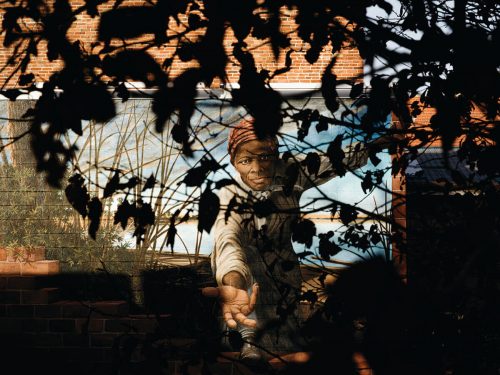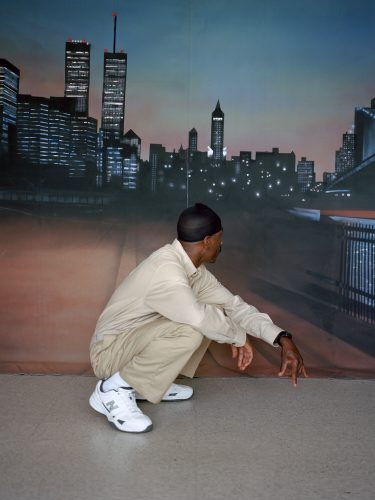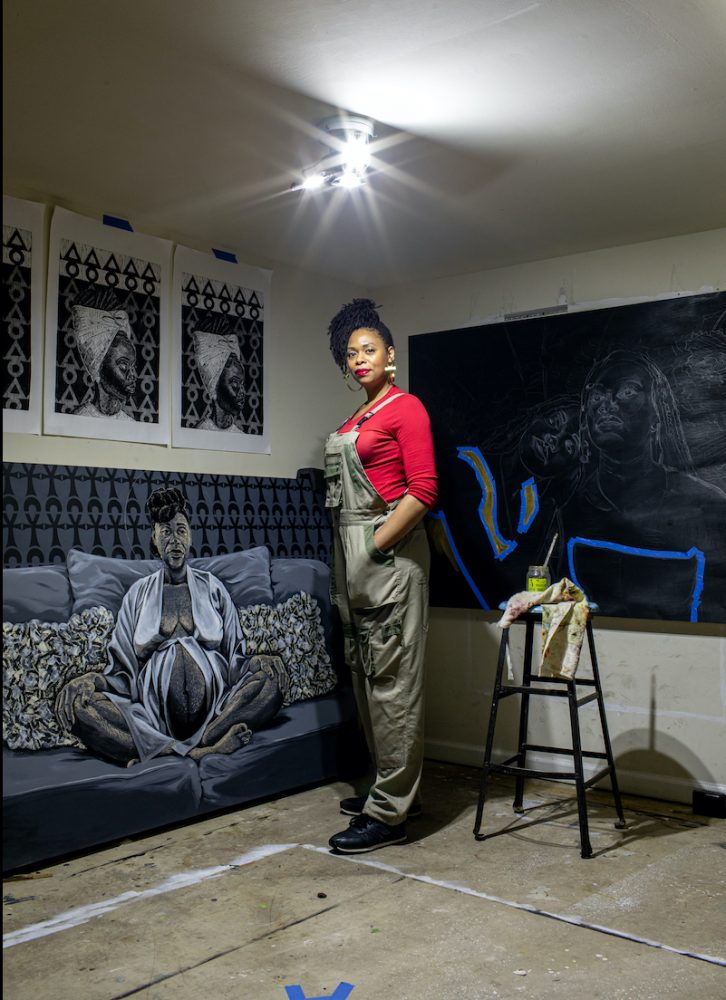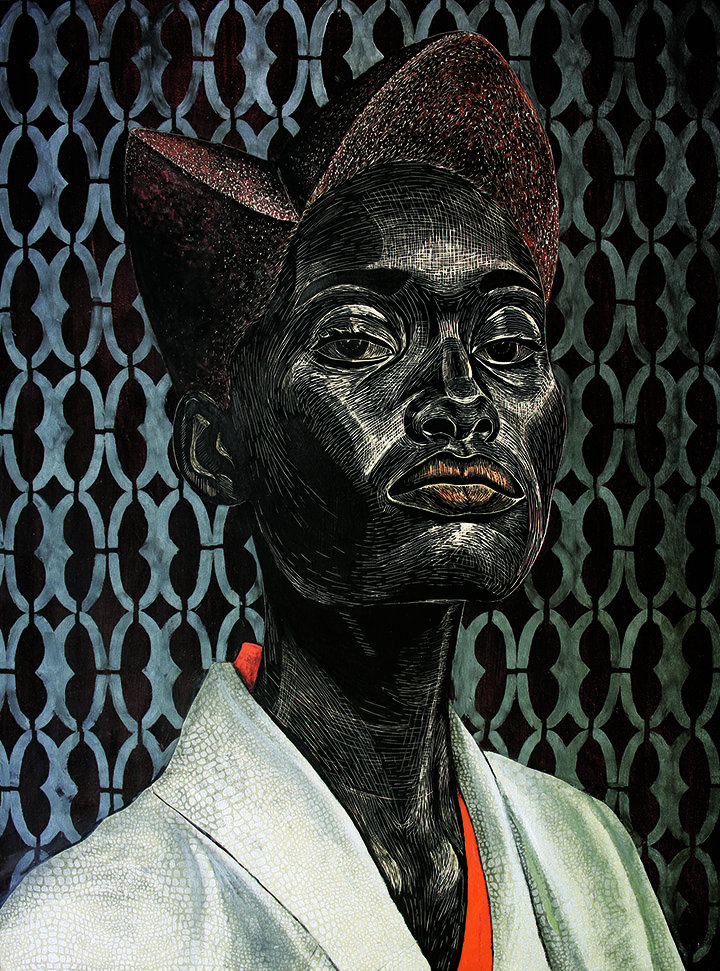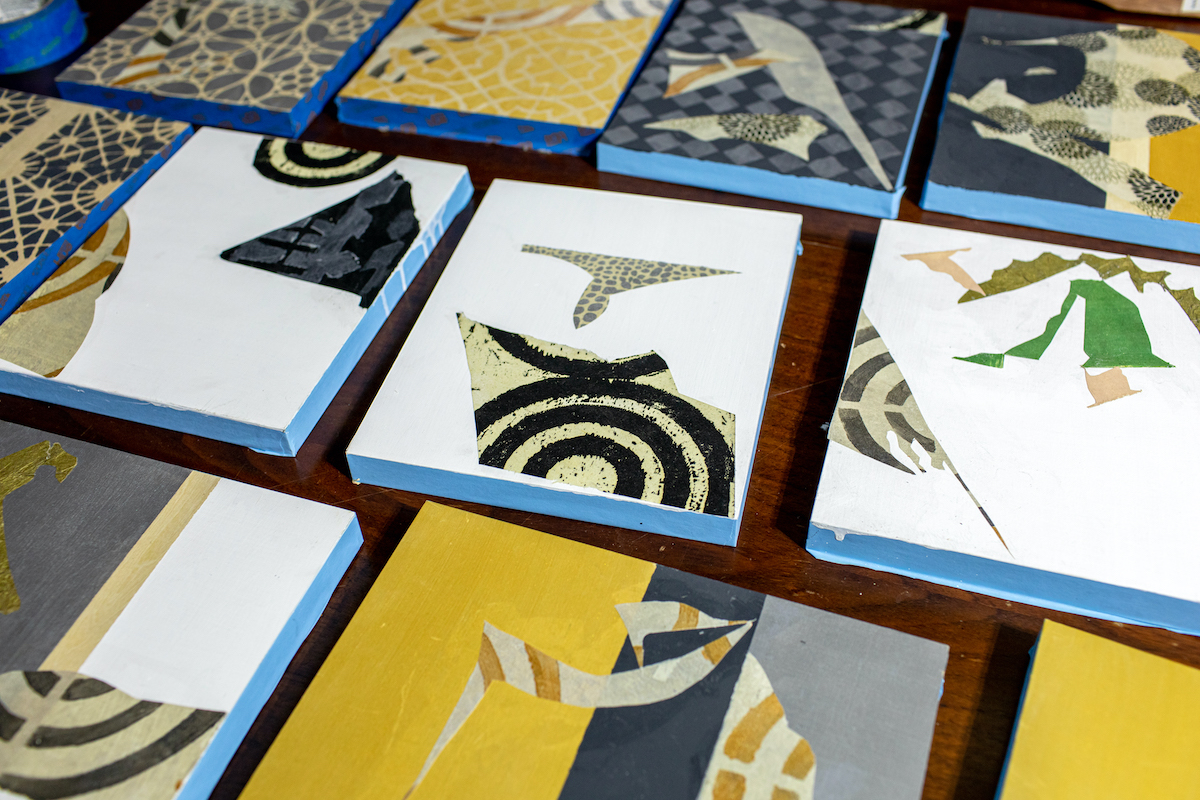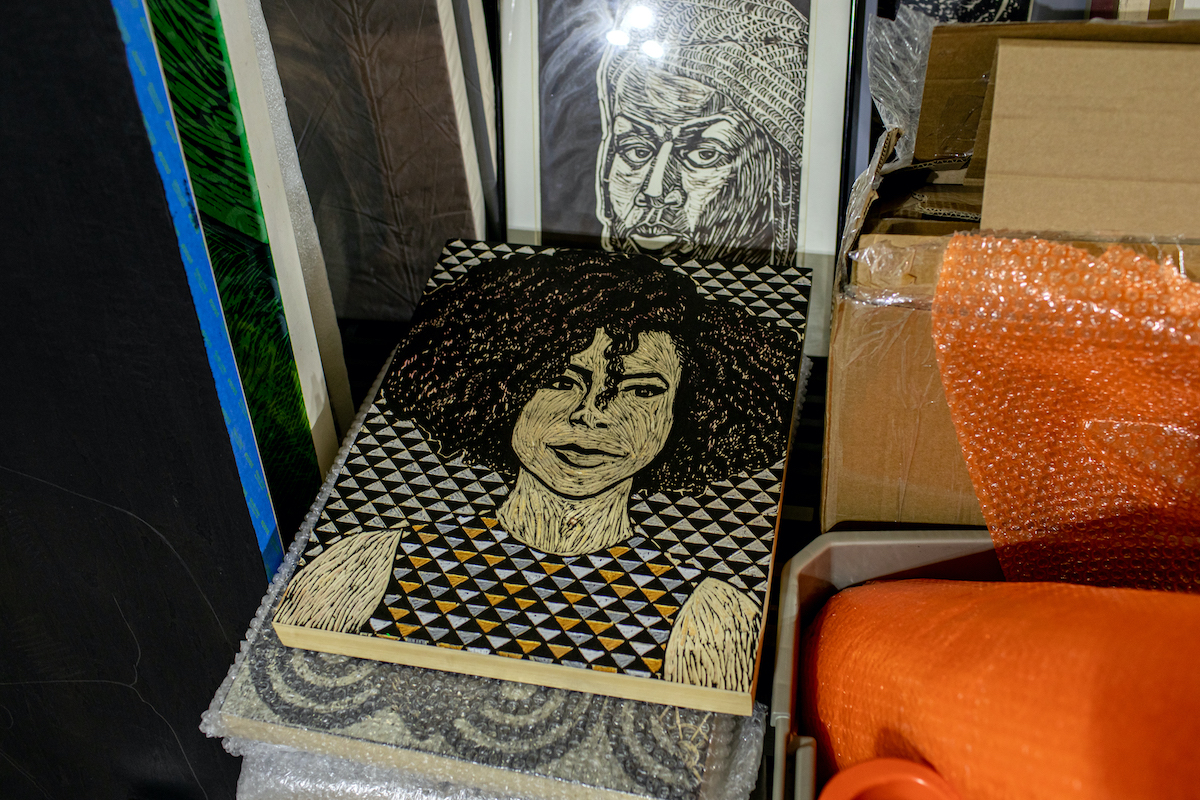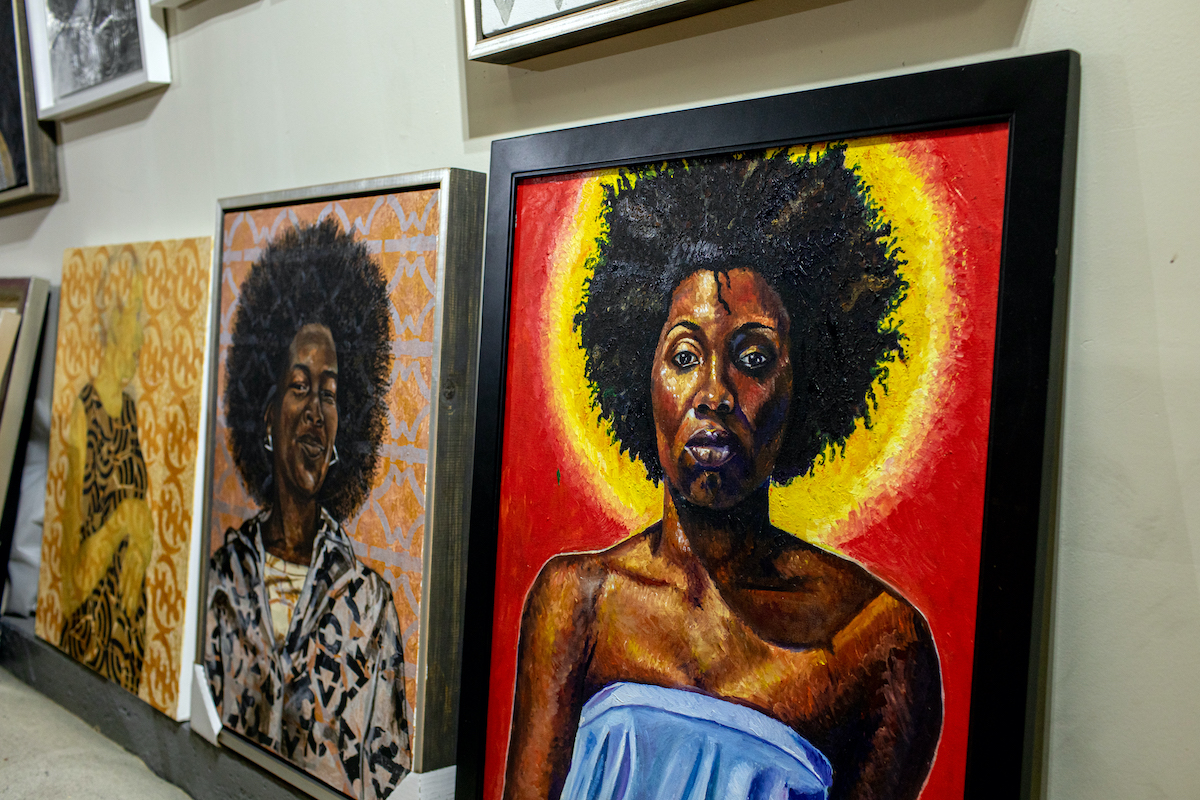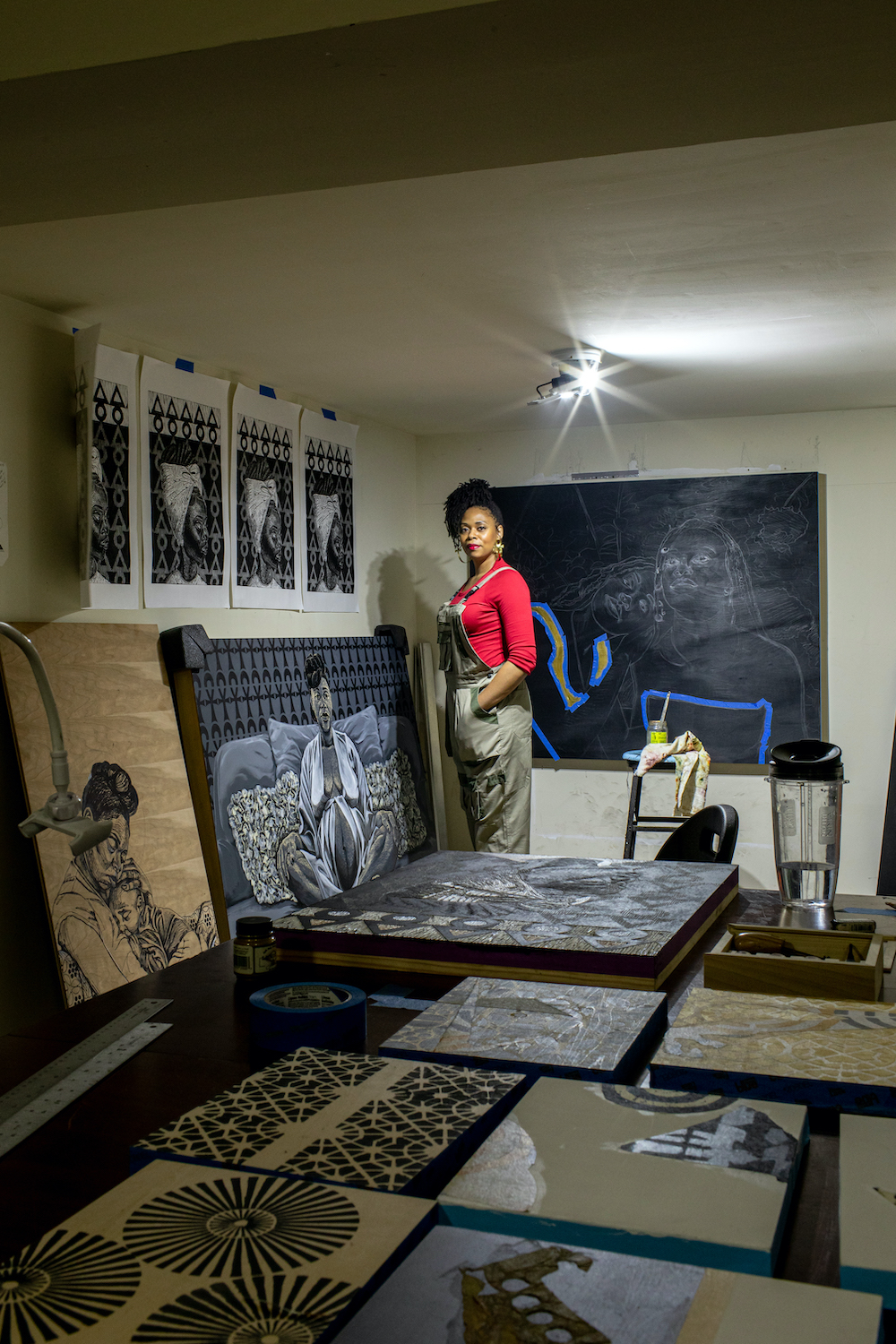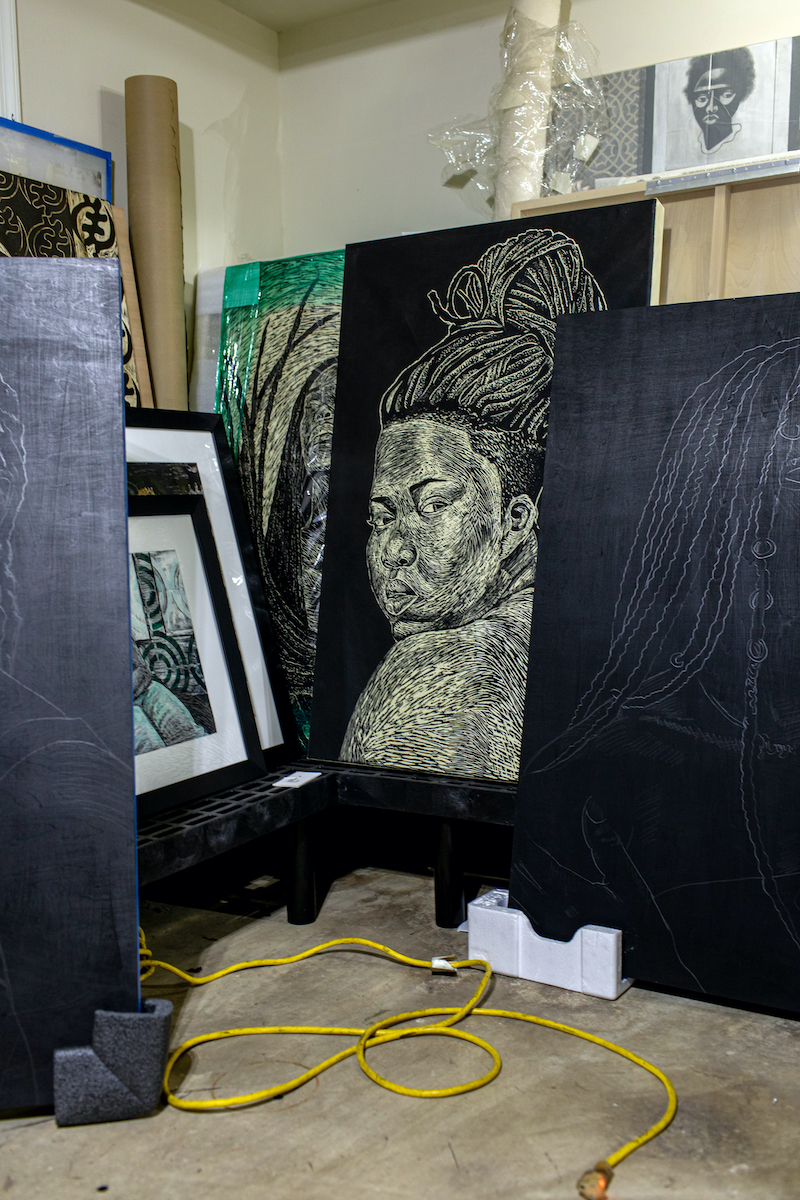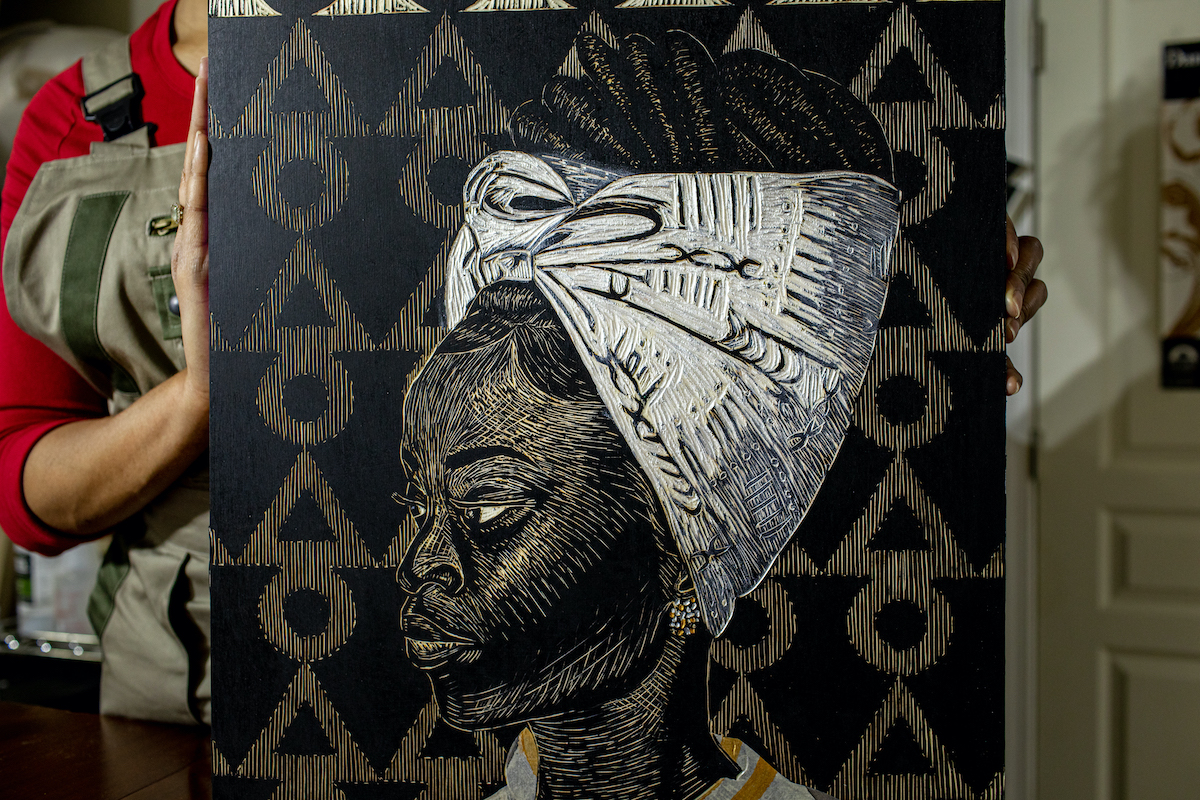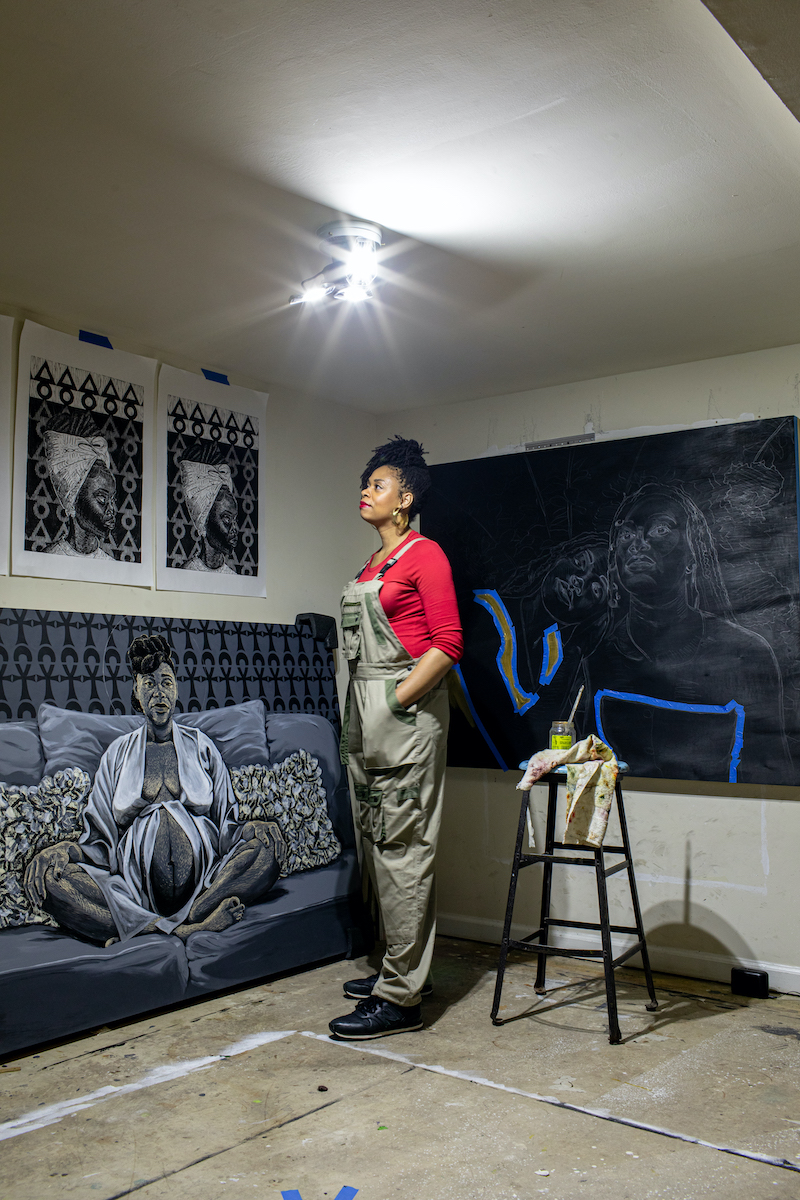LaToya Hobbs was a self-professed homebody even before COVID times. The artist and educator works mostly from her home basement studio where, since last March, she’s also been teaching her college classes remotely. Being at home allows the 2020 Sondheim prize winner to maximize her time, which Hobbs needs to do because she’s doing a lot.
Known for her arresting, large-scale paintings of Black women that mix the aesthetics of print techniques with portraiture and pattern, over the last two and half years Hobbs has had three solo shows in Baltimore, exhibiting first at Goucher College, then Baltimore City Hall and finally, her Sondheim prize-winning digital exhibition with BOPA (that in any other year would have taken place at the Walters Art Museum). She was also the 2019 recipient of the Artist Travel Prize awarded by the Municipal Art Society of Baltimore City to take a research trip to Morocco, which was unfortunately cut short by COVID back in March.
The mother of a four- and six-year-old, Hobbs has been prioritizing her family for the last three years and breaking into the Baltimore art scene. As a result, she has put seeking gallery representation on the back burner.
“I want to have something that is sustainable for me and also respect the fact that my family is a priority right now,” she explains. “My practice is a priority, but being a mom is also a huge priority as well. I just want to make sure that I’m balancing—’balancing’ is in quotations!—all of those things together. I like the fact that I can produce at my own pace. I can control where my work goes, who I sell my work to and I can keep all of the profit.”
